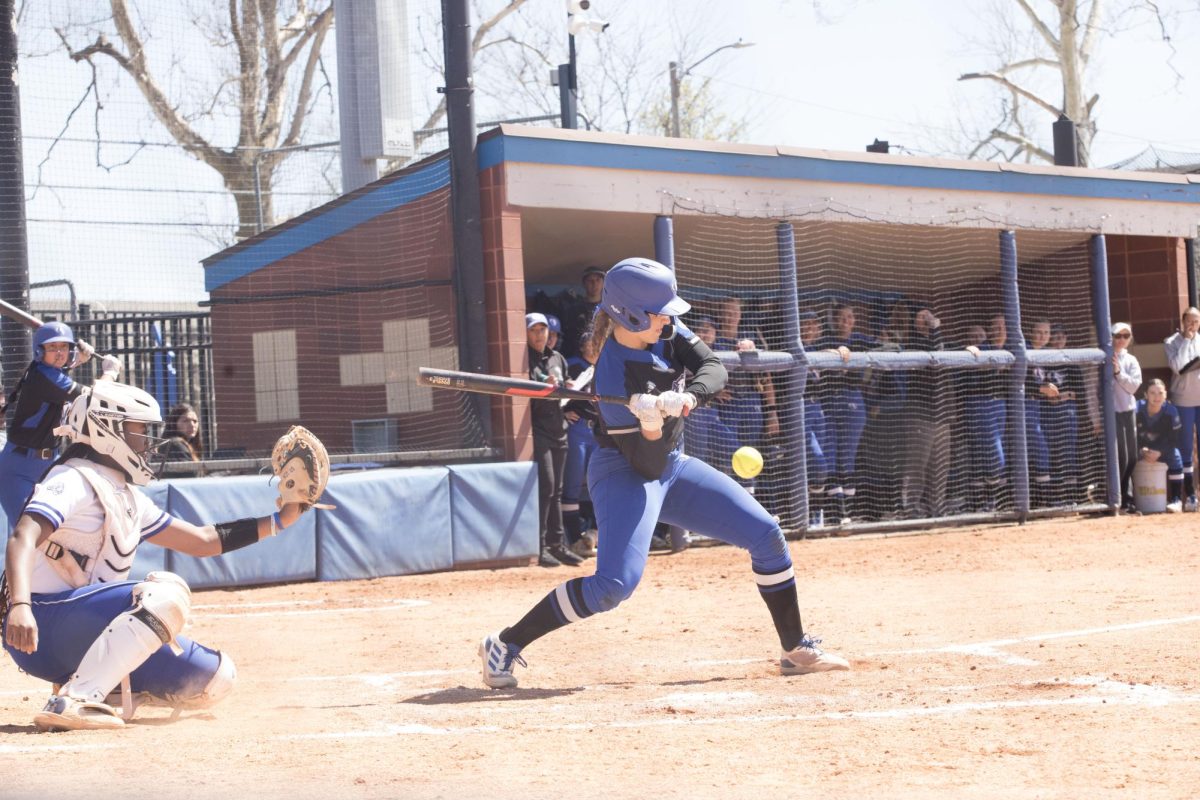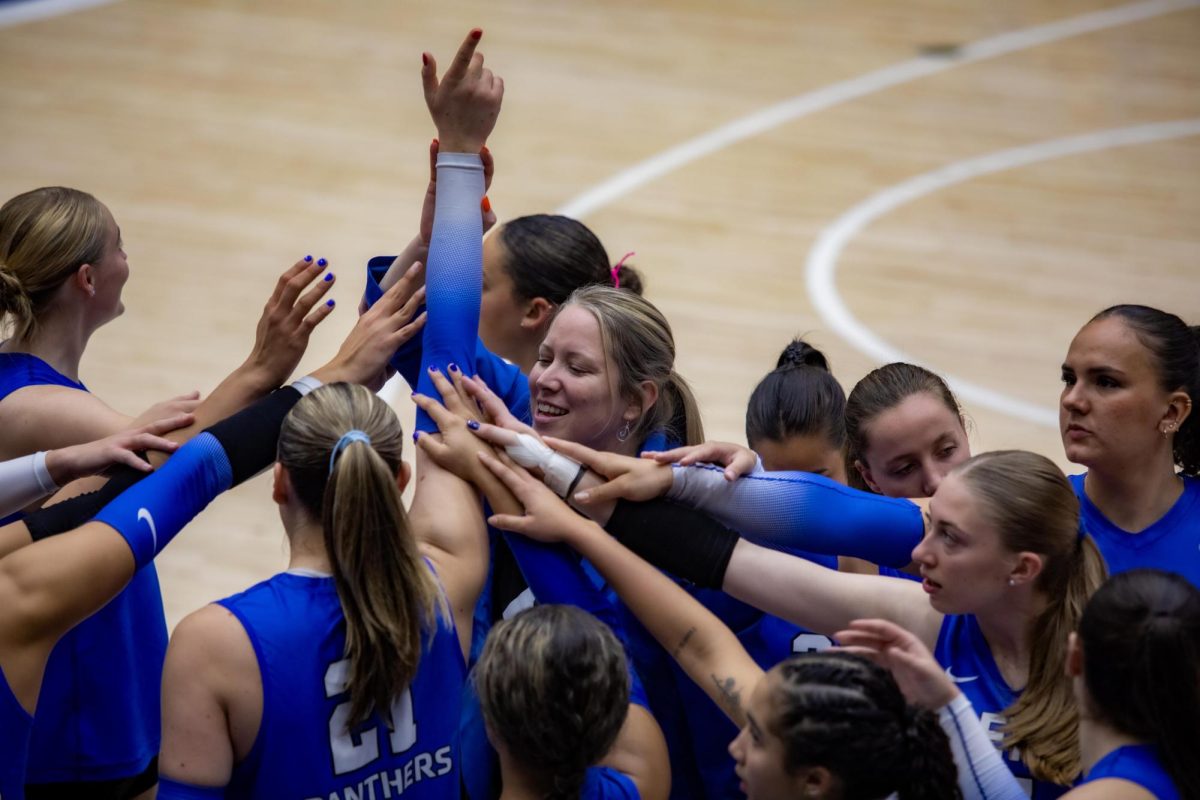Booth Library chandeliers get TLC
For the second time in five years, building service workers will clean the 64-year-old chandeliers that hang over the heads of thousands of Eastern community members who walk through Booth Library.
Arlene Brown, an office manager in Booth Library, said one of the three chandeliers hanging from the ceiling in the Marvin Foyer was lowered on Friday. She said electricians and carpenters used a winch to bring the chandelier to the ground so it could be cleaned and the bulbs could be replaced.
Booth Library houses a total of five of these chandeliers with the other two hanging in the north entrance of the library.
They stand about 10 feet tall made of cast iron and frosted glass.
“They are very impressive to see up close,” Brown said. “The scroll work is very intricate and detailed and are quite massive.”
She said the chandeliers were made for the library in 1948 when additions to the building were constructed.
Derek Graham, a building service worker who has worked in Booth Library for about 15 months, said he spent about an hour and a half cleaning the chandelier on Friday.
To clean the chandelier, Graham used a vacuum and rags with cleaner.
“Oxidation occurred on the metal being as old as it is,” Graham said.
The oxidation produced patina, which is a film that produces on metal over time, he said.
A floral motif was cast throughout the metal, and some of the metal is rough from when it was poured, he said.
Brown said they lower one chandelier at a time and do not need to close off the area because students can walk around them.
They decided to clean them in the summer because that is when they have the least amount of foot traffic, she said.
“The summer is also the time when the building service workers do extensive cleaning on the carpets and dusting in higher areas,” Brown said.
Graham said Booth Library probably has more carpet than any other building on campus and that service workers also work on light fixtures such as those in the Ballinger’s Teacher Center and masonry work near the display cases in the north entrance.
He said they mostly use ladders and build scaffolds to reach high areas.
“Because of the architectural design, they cannot bring a lift into all areas,” Brown said. “For example, we can get a lift for the west windows in the atrium but not the east because of where the staircase is located.”
Graham said he thinks it is most difficult to do work in the atrium.
“There is such high traffic because there are students coming in from both entrances and they usually converge to go on the fourth floor and utilize the walkway there,” he said. “From the carpets to the windows to everything else, it can be a challenge to make it look like no one has gone through the building before.”
Rachel Rodgers can
be reached at 581-2812
or rjrodgers@eiu.edu.





































































